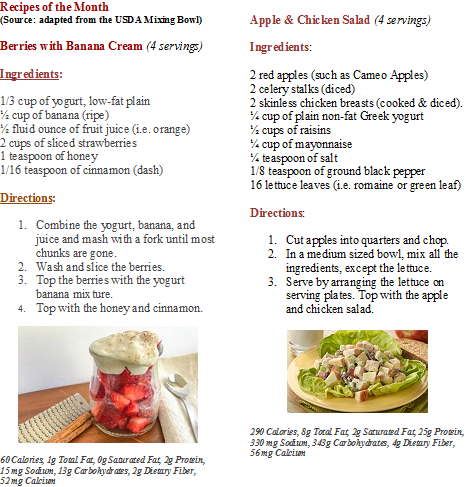June brings warmer temperatures and longer days. As kids finish the school year and spend more time outdoors in the heat, they will undoubtedly look for refreshing snacks, such as ice cream. A healthier alternative to ice cream (and other high-fat summer snacks) is yogurt.
Yogurt is great as a stand-alone snack (you can also add fruit, seeds, and/or granola), as a fruit dip, or even as a substitute for buttermilk in baked goods. Yogurt can also be used as part of a refreshing drink by adding fresh juice, shaking, and chilling.
Data provided by the USDA shows that Yogurt contains “good bacteria” known as probiotics. Probiotics improve the body’s immune levels and reduce the development and growth of harmful organisms in the stomach. All yogurts contain calcium, vitamins B and D, protein, and potassium.
Varieties of yogurt:
Traditional plain yogurt is smooth and has a tart taste.
Greek plain yogurt is thicker than traditional yogurt and is more protein rich (containing about twice as much protein and half the carbohydrates as regular yogurt). It is also lower in calcium, sodium, and sugar.
Greek yogurt promotes the feeling of fullness as a result of the increased protein, so it is an ideal option for breakfast or a snack for more active people.
Plain yogurt has no added fruit or sugar.
Flavored yogurts may contain fruit or other natural or artificial flavorings or sweeteners.
Non-dairy yogurt is made from soy, coconut, or almond milk.
Purchasing and storing tips:
You can save money by buying larger containers of yogurt instead of single serve cups. If stored properly (refrigerated and covered securely), it is safe to eat yogurt after the “use-by” date; however, the flavor may be more tart and you will need to stir the yogurt if the liquid has separated out. Yogurt can be frozen, but the texture will not be the same after it has been thawed.

